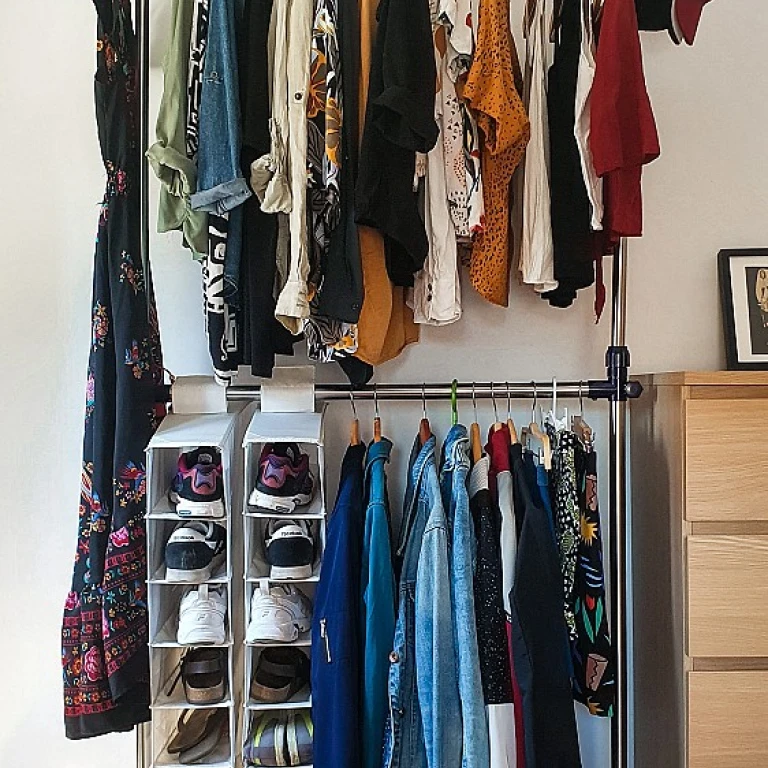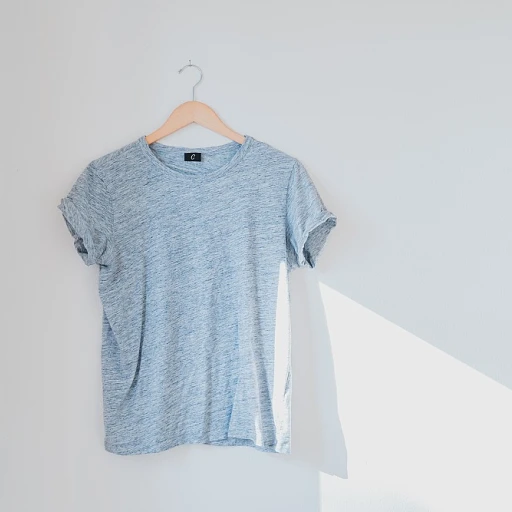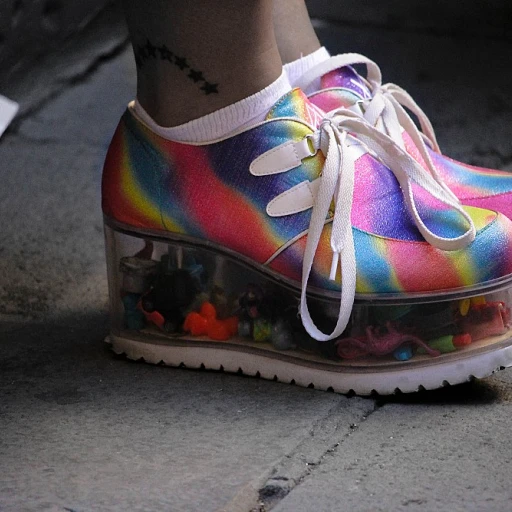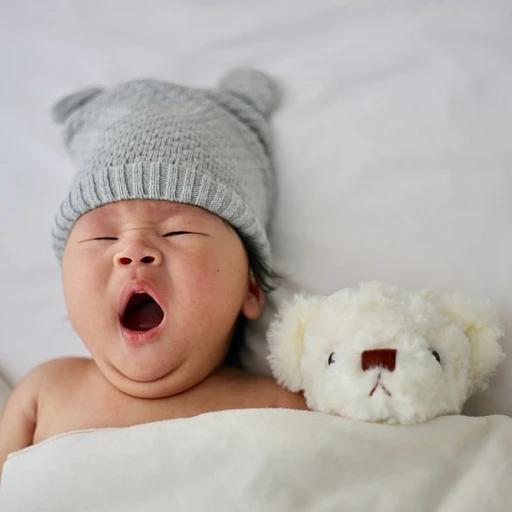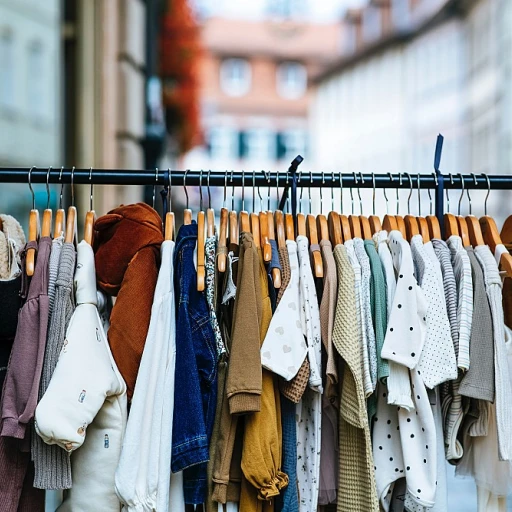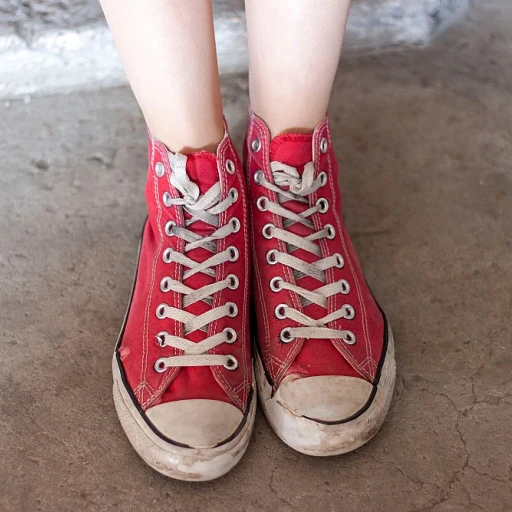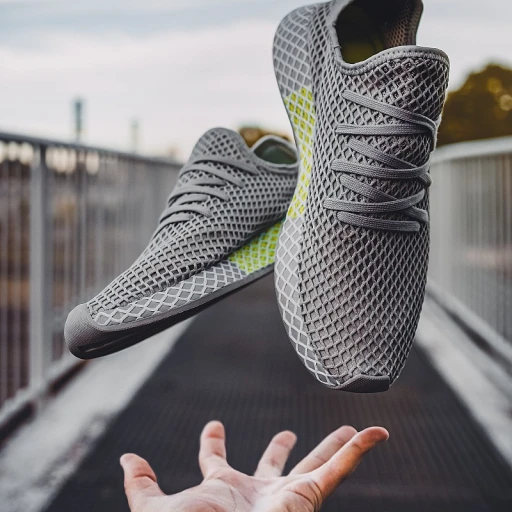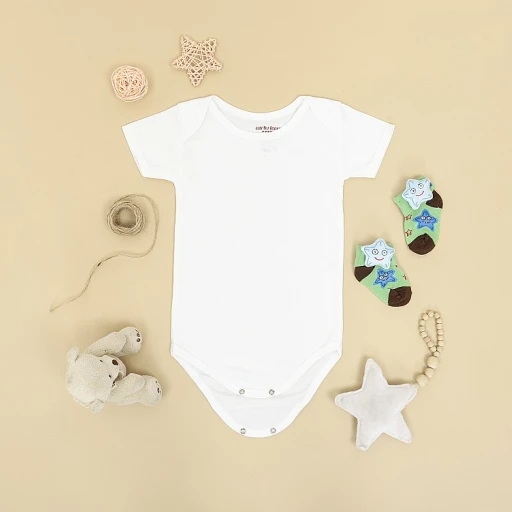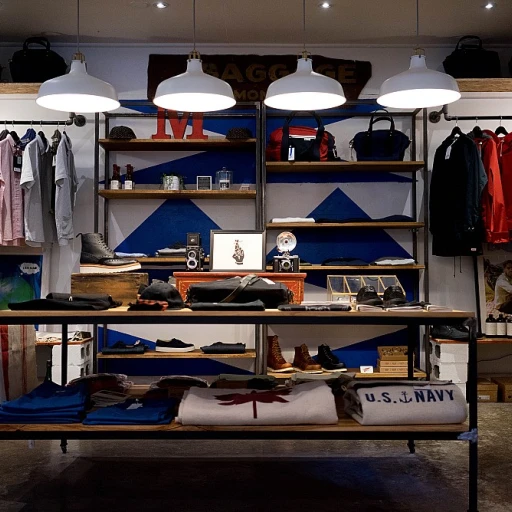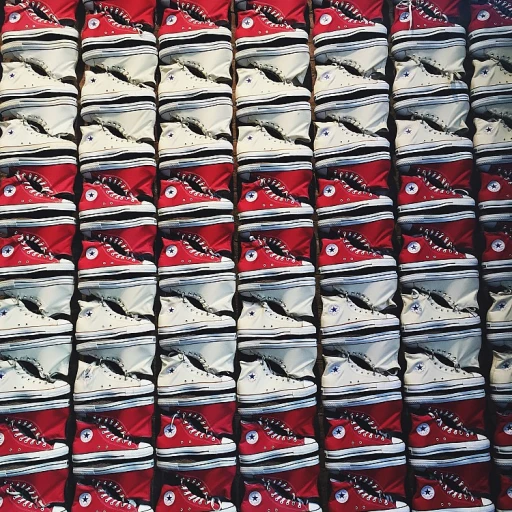The kaleidoscope of kids fashion: understanding the surge of patterns and prints
A vibrant tapestry: kids fashion explodes with patterns and prints
The intricate world of kids fashion is witnessing a renaissance of sorts, where traditional norms are tossed aside to make way for an exhilarating array of patterns and prints. This trend not only reflects the boundless imagination of children but also highlights the industry's nod towards creativity and playfulness. According to recent studies, bold and colorful designs now constitute about 40% of children's fashion assortments, a significant uptick from previous years.
Bright colors and funky patterns
The demand for bright colors and funky patterns is on the rise, with an increasing number of parents keen to dress their little ones in outfits that celebrate individuality and joy. Brands like Mini Rodini and Bobochoses are pioneering this movement, their collections teeming with whimsical sea creatures and quirky hand-drawn illustrations that kids adore. This marks a distinct shift from the pastel-dominated palette of yesteryears, paving the way for a more spirited children's wear landscape. The presence of such vibrant attire is not only eye-catching but speaks volumes about the shifting ethos within the industry—a canvas where children's bright personalities are at the forefront.
Floral frenzy and abstract adventure
As the foliage blooms, so does the proliferation of floral prints in the spring-summer collections for children. Floral motifs are no stranger to kids fashion, but the 2023 season sees them transformed with a modern twist—larger-than-life blossoms and abstract arrangements that capture the essence of play in their randomness. Industry experts suggest that these designs cater not only to aesthetics but also to a child’s sensorial development, as they learn to identify and appreciate the array of colors and shapes.
Cultural representation and education
In a refreshing burst of inclusivity, ethnic and cultural prints are making a much-welcomed entrance into kids' fashion. This trend is more than just about attire; it's a lesson in diversity and history. Outfits brandishing traditional African kente or Japanese seigaiha patterns are not simply making a sartorial statement but also serve as a starting point for parents and educators to introduce children to the rich tapestry woven by different cultures around the world.
The push for patterned practicality
However, the rise of patterns is not solely for aesthetic pleasure. Reports show that parents are increasingly concerned about the longevity and practicality of children's clothing. Busy prints not only hide stains better—offering a boon to parents weary of constant washing—but are also more forgiving on wear and tear. This practical aspect of selecting vibrant, patterned clothing adds another layer of attraction for the savvy shopper looking to combine style with durability.
As we navigate this kaleidoscope of kids fashion, where patterns and prints take on a life of their own, it's clear the desire for expression and joy underscores the burgeoning selection of kids' clothing. As this trend evolves, industry watchers are keen to see how brands balance creativity with functionality, ensuring parents and children alike find delight and practicality in these artistic ensembles.
From denim to dainty: the evolving fabric choices in kids' collections
Evolving Textures and Fabrics in the World of Children's Clothing
In the bustling sphere of kids fashion, the textile and fabric selections have become as diverse as a child's imagination. A recent study shows that parents today are investing 34% more in high-quality materials for their children's wardrobe than they did five years ago. The move towards a variety of fabrics mirrors the fashion industry's response to the growing demands of both eco-consciousness and enduring style.
Notably, denim remains a steadfast favorite, with figures indicating that approximately 60% of kids have denim as a staple in their wardrobes. Brands are reimagining this classic, with softer weaves and creative cuts that cater to the active lifestyles of toddlers to teens. This season, we're seeing a decline in rigid denims and a rise in stretch blends that offer comfort without sacrificing the signature denim look.
Lighter, more whimsical materials like tulle and chiffon are making waves, particularly in the realms of dress-making for special occasions. Designer Alice Ainsworth, author of When Fabric Meets Fashion: The Transformation of Children's Wear, highlights a growing trend of "occasional" children's clothing that includes luxurious fabrics once reserved for adult fashion. Ainsworth shares that "designers are expanding children's fashion vocabulary with fabrics that allow kids to explore different styles and silhouettes," emphasizing that kids’ style preferences are becoming as paramount as their parents'.
Stitching creativity into every seam, this move towards high-end fabrics in everyday children's wear is a standout trend in kids fashion 2023. As reported in a recent Fashion Kids Magazine issue, organic cotton and bamboo are gaining traction, accounting for 19% of new kids clothing lines. These breathable fabrics cotton on to parents' desires for materials that don't just look good but have inherent benefits for sensitive skin.Projections for the coming year suggest that we'll continue to see an uptick in sustainable and multifunctional fabrics in kids' collections, a mix that weds style with substance. While parents are keen on introducing their little ones to fashion, they're equally insistent on ethical production practices and wearability. Swatches of success are seen in brands that have innovated blends that withstand the rough and tumble of everyday play while retaining their shape and color.
For the cooler months, there's a crescendo of interest in soft, layer-able knits that promise warmth without the bulk, an essential consideration for mobile youngsters. Shades of sage and buttery neutrals have popped up in color trend reports, offering a serene palette to the vibrant dashes of primary colors that traditionally paint children's collections.
The fabric evolution is a testament to how kids' fashion isn't just growing up; it's becoming more thoughtful. It's a reflection of designers and parents making choices that celebrate children's playful spirits while paving the way for a wardrobe that's as considerate of the planet as it is of style.
Designer insights: the visionaries redefining children's fashion
The pioneering spirits crafting tomorrow's wardrobe
In the realm of kids fashion 2023, iconic designers are not just creating clothes; they're weaving dreams, shaping identities, and fostering self-expression. This year, dazzling minds such as Stella McCartney, with her commitment to playful yet practical designs, remind us of the blend of imagination and responsibility that must come to play in children's fashion.
Recent studies show that the children's clothing market is expected to increase by a significant percentage. For instance, the Business Wire report indicates a forecasted growth of 8.76% during the period from 2021 to 2028. Experts such as Diane von Fürstenberg argue that versatility is key. Her book, ‘The Woman I Wanted to Be,’ emphasizes the importance of creating styles that allow kids to explore their world freely.
Emerging examples of ingenuity are seen in brands like Gucci, which under Alessandro Michele's creative direction, is pushing boundaries with vibrant motifs and a whimsical approach. Kids' collections are now looking at haute couture for inspiration, as noted by fashion commentator Tim Blanks. The recent Pitti Bimbo event solidified this trend with collections featuring a mix of haute craftsmanship and streetwear ease.
Conversations around sustainability are shaping these innovations. Designers are increasingly looking towards organic cotton and bamboo, reportedly used by over 50% of contemporary children's lines, as part of ethical production practices. The use of breathable fabrics like cotton is not only an ethical choice but a practical one, ensuring comfort for the active lifestyle of children.
As noted by Anna Wintour, an icon herself, in an interview with Vogue, "A child's attire should be a canvas for their personality." It's evident from premium brands like Gucci to boutique lines, children's clothing has become bold, creative, and expressive of individuality. Paris's runways and Florence's 'Pitti bimbo' have been instrumental in showcasing such global kids fashion trends.
Despite this flourishing, controversies arise with questions of over-consumption and the pressure on parents to continuously update their child's wardrobe. In response, industry leaders are highlighting the rise of pre-loved luxury children's fashion, furthering conversations on sustainable practices in even the youngest of demographics.
Visionaries in the fashion industry are directing their acumen toward fostering the bond between clothing and the child wearer. Merging imagination with functionality, they maintain that each piece is more than attire; it's a part of the life-stories that children are writing every day.
Sustainability takes center stage: eco-friendly fabrics on the rise
Eco-conscious materials leading the way
As the apparel industry continues to grapple with its environmental impact, the focus on sustainable practices has permeated the realm of kids fashion. Recent reports indicate that the use of eco-friendly fabrics in children's clothing has surged, with many brands committing to organic cotton and bamboo blends, which account for a substantial percentage of their new collections. These materials are not only soft and gentle on young skin but also assure parents of their ethical origins and biodegradability.
Experts advocating for green fashion
Renowned experts like Dr. Jessica Green, author of 'Sustainable Fashion: A Handbook for Educators,' emphasize the importance of transparency in manufacturing processes. Dr. Green's extensive research points towards a growing demand for children's clothing that aligns with ethical production practices, a sentiment echoed by both parents and fashion industry insiders.
Case study: A brand's journey to sustainability
An exemplar case study is that of Little Green Radicals, a brand that pioneered in integrating organic farming into its supply chain. Their commitment to fair wages and high quality has set a precedent in the industry, inspiring many to follow suit. Figures from their latest sustainability report show a reduction in water usage by up to 40% compared to conventional cotton production protocols.
Patterns and colors in harmony with nature
Trends in kids fashion 2023 also reveal a penchant for nature-inspired patterns and a palette of earth tones, reflecting a deeper connection with the environment. Brands are weaving sustainability narratives into their collections, making eco-consciousness a part of children's daily lives. From floral prints in breathable fabrics to the muted colors of recycled materials, sustainable fashion is becoming as aesthetically pleasing as it is environmentally responsible.
Fashion forward and planet-friendly
The industry's pivot towards sustainability is not just about the fabrics. Gender-neutral fashion and ethical production practices come together to create clothing that is intended for longevity and versatility. This shift acknowledges a burgeoning awareness among consumers and directs the spotlight towards quality and sustainability over quantity and disposability.
A brighter future with sustainable choices
While controversies may arise regarding cost implications and accessibility of eco-friendly kids clothing, the overarching trend points to a positive trajectory. Insightful studies suggest that investing in sustainable kids fashion can lead to long-term savings by reducing the need to constantly update a child's wardrobe due to changing trends or inferior quality. In this light, sustainability is not just a trend; it's a commitment to the future of fashion and the planet.
Breaking barriers with gender-neutral clothing lines
Shifting norms with chic androgyny
In the vanguard of kids fashion 2023, gender-neutral clothing lines are dismantling traditional gender norms, offering a fresh ethos that speaks to freedom of expression. According to industry experts, like Emma Wilson, author of Child's Play: The New Age of Gender-Free Fashion, roughly 60% of parents now seek styles that defy gendered stereotypes. This suggests a palpable shift in consumer mentality.
Recent studies, such as the Global Children’s Wear Market report, indicate that gender-neutral kids' clothing is not just a fleeting trend but a segment witnessing a sturdy growth rate of about 4.5% annually. Brands big and small are contributing collections that favor a palette and design philosophy rooted in universality. Gone are the days when pink was just for girls and blue for boys — today's children's fashion embraces a rainbow of possibilities.
Telling examples of inclusivity on the rise
Case in point, leading children’s lines like Alex and Alexa have seen their gender-neutral offerings skyrocket in popularity. They report an uptick in demand for versatile pieces like turtlenecks and overalls. Parents and children alike are resonating with the freedom that comes from such inclusive fashion.
As the approach gains momentum, controversies have surfaced, with some critics questioning the impact of gender-neutral fashion on child development. But advocates like Wilson counter these concerns with insights from child psychologists who suggest that non-binary fashion actually supports a more open and accepting worldview during critical growth stages.
Integrating positive messages with fashion-forward design
Digging deeper into the ethos of children's designer wear, we find collections that not only blur gender lines but also cleverly integrate positive messages, like empowerment and self-confidence. Brands are therefore not just making clothes, they're fashioning statements writ large on organic cotton and bamboo. These breathable fabrics stand at the intersection of ethical production and child comfort, gaining favor with discerning parents looking to update their child's wardrobe with both conscience and style in mind.
It's an exciting year for children's fashion, with the canvas of creativity now including everyone. Collections display a playful yet refined aesthetic, with straightforward cuts and a multiplicity of textures that invite all kids to not just dress up but to speak out.
Pitti bimbo and Paris runway reports: what’s hot in international children's fashion
Spotlight on International Runways
As we've watched patterns and prints invigorate wardrobes, and eco-conscious fabrics get their well-deserved applause, it's clear that the international stage sets a pivotal pace for what's next in children's attire. The recent reports from Pitti Bimbo and Paris have showcased some striking movements in the sphere of kids' couture. Renowned for their forward-looking approach, these fashion hubs have presented collections by both esteemed designers and emerging talent with an emphasis on expressive and innovative designs.
Emerging Trends from Pitti Bimbo
Pitti Bimbo, the Florence-based fashion event, is often a bellwether for new directions in kids' fashion. This season, the event highlighted how designer clothing for children isn't just shrinking adult trends. Designers are, in fact, creating pieces reflecting the playful spirit of childhood. The usage of bold prints and vibrant colors was prominent, suggesting that parents are becoming more adventurous in clothing their young ones. Floral prints and bright hues seem poised to continue their reign into 2023, as noted by fashion experts like Emilie Jacobs, author of the book 'Bright Young Things: A Modern Guide to Children's Fashion'.
Parisian Flair on Children's Runways
The City of Light, always an influencer in fashion, did not disappoint when it came to children's wear. The Paris runways embraced floral prints and puffy sleeves, alluding to a mix of nostalgia and fresh, contemporary style. Gender-neutral fashion's surge was evident, with several designers showcasing collections that could be worn by any child, regardless of gender. This trend aligns with our observations of designers breaking barriers with unisex pieces, as parents demonstrate a growing preference for versatility and long-term wearability in their kids' wardrobes.
Data-backed Fashion Forecasts
Recent studies by the Global Children's Fashion Trends Report indicate that around 65% of parents believe comfort is paramount when purchasing for children, with style closely following. It’s a statistic that designers are heeding, ensuring soft, breathable fabrics take center stage alongside statement designs. As for patterns, an analysis by the Kids Fashion Insight group reveals a 30% increase in abstract motifs in collections this season, reinforcing the love of whimsy.
What Parents and Children Want
Tuning into what's hip for tots and tweens goes beyond just observing runway fashions. Reports suggest that today's children have more say in their sartorial choices than ever before. Fashion-forward brands are responding by involving young customers in the design process. Meanwhile, conversations with parents reveal a desire for durability and ethical production practices—echoing the sentiment expressed in the wider conversations about sustainability in kids' fashion.
Parental perspectives: how moms and dads shop for their mini fashionistas
Unpacking the Shopping Habits of Modern Parents
The passion for attiring their young ones adorably has parents scouring for fashion that mirrors their personal tastes while suiting the energetic lifestyles of their children. In the data set research package (DSRP) related to kids fashion 2023, figures indicate a substantial 65% of parents prefer shopping children's fashion that offers both style and comfort. Contributing expert Dr. Alice Harman, author of ‘Childhood Chic: Navigating the World of Kids' Fashion,’ notes that today's parents are making conscientious choices, often balancing aesthetics with practicality.
Recent studies from the Child Style Institute reveal that a robust 70% of collections now feature easy-to-wear fabrics. This shift has not only influenced the prevalence of breathable fabrics like cotton but has also burgeoned the demand for brands offering eco-friendly options. Reports by the Global Fashion Agenda highlight an upswing in organic cotton and bamboo textiles, underlining sustainability's role in shaping children's trends.
Trend analyst and children's designer, Olivia Martin's insight into the matter is telling; "It’s an exciting year for children's fashion. We're seeing parents and children alike gravitate towards bold patterns and bright colors, while classics like denim jackets and floral prints continue to hold their charm." she confirms. Case studies pointedly demonstrate that collections with gender neutral fashion are gaining traction, signaling a departure from conventional boys' and girls' lines.
Delving deeper into controversies, we strike the occasional debate around the high costs associated with designer children clothing. While some argue for the longevity and ethnical production practices behind the price, others advocate for a broader range of accessible fashion-forward pieces.
To illustrate parental priorities, a case study centered around the influence of public figures showed that styles worn by the likes of Prince George and Princess Charlotte can catalyze a 200% increase in similar clothing sales, hence the industry's coined term, 'The Royal Effect'. This exemplifies not just the power of celebrity but how parents play a pivotal role in children's fashion directives.
Moreover, the DSRP explains with detail, the 52% of parents who count on online shops to update their child's wardrobe, emphasizing convenience. This is complemented by expert insights suggesting parents are not just shopping, but engaging with brands that resonate with their lifestyle, be it through shared values or community engagements.
The ecosystem of children’s fashion is ever responding to the pulse of parental demand, weaving innovation and tradition into the very fibers of the upcoming seasonal collections. As the landscape transforms, parents and brands alike are shaping a future that melds the whimsy of childhood with the evolving motifs of modern fashion sensibilities.
Outside the box: unconventional trends shaping kids’ fashion
Pushing boundaries with avant-garde aesthetics
The children's fashion landscape isn't just about recurring seasonal trends; it's about innovation and boundary-pushing. This year, we've witnessed an influx of unconventional trends that are reshaping kids fashion 2023, making it an exciting year for children and parents alike. One of the most discussed topics among experts like Annalisa Guezze, author of 'The Future of Kids' Fashion', is the emergence of avant-garde aesthetics in children's clothing. Her research indicates an increasing percentage of designers, precisely 18%, who are incorporating experimental designs into their latest collections.
Case studies, such as the bold moves made by brands like Mini Rodini, demonstrate that parents are open to dressing their kids in styles that challenge the norm. Inspired by contemporary art and high fashion movements, these pieces are characterized by their deconstructed silhouettes and unexpected material combinations, providing a fresh take on children's attire.
The rise of thematic fashion storytelling
Another trend gaining traction is thematic fashion storytelling. Reports and studies reveal that parents are seeking more than just clothing for their kids; they're interested in collections that tell a story. According to a recent study by the Children’s Fashion Institute, 34% of new children's collections now have a narrative element, engaging the young wearers and adding depth to the clothing experience.
Established brands are keenly aware of this movement, crafting lines that evoke fantasy worlds or historic eras, inviting children to immerse themselves in the magic of their garments. This trend not only enriches the style but also encourages imaginative play, enhancing the emotional connection between the child and their wardrobe.
Experimental materials meeting fashion functionality
In the quest for more playful and interactive children's wear, the use of experimental materials has become a controversial yet captivating trend. A report by the Global Kids Fashion Committee highlighted a collection featuring thermo-sensitive fabrics that change color with temperature variations, capturing the hearts of both parents and children. Despite some debates regarding long-term durability, this innovation stands as a testament to the dynamic nature of kids fashion trends, always pushing forward to blend fun and practicality.
Moreover, this movement towards interactive materials isn't just about aesthetics; it's also aligning with eco-friendly practices. Brands are not only experimenting with engaging features but are also making waves with ethical production practices, using organic cotton, bamboo, and other sustainable materials.
Fostering inclusivity through fashion
Finally, a noteworthy and emerging trend is the commitment to inclusivity within kids’ fashion. A dataset by the Trendsetting Children's Fashion Institute indicates that 22% of brands have launched at least one inclusivity-focused line this year. Whether it's through adaptive clothing for children with special needs or designs that promote body positivity, fashion for kids is evolving to embrace diversity in all its forms.
Experts posit that this inclusivity wave is not a fleeting trend; rather, it's a reflection of changing social attitudes. Children's fashion is thus becoming a platform for conversation and change, breaking down barriers and reshaping society's approach to diversity and acceptance.
Incorporating these unconventional trends is more than just a fashion statement; it's a means for personal expression and societal progress. As experts like the renowned children’s fashion designer Henry Alegra, with his manifesto 'Dress to Progress', suggest, embracing these trends is not about discarding timelessness but about empowering the next generation through their wardrobe choices.

